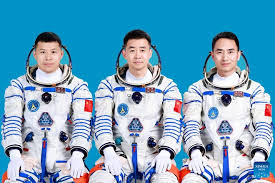Lab-related virus plots contrary to facts: Wuhan lab

Beijing: Claims that the novel coronavirus was man-made or leaked by China’s National Biosafety Laboratory at the Wuhan Institute of Virology (WIV) is totally contrary to the facts, according to lab director Yuan Zhiming.

Studies worldwide on the novel coronavirus genome showed no evidence of artificial modification in the virus. These studies have further indicated that its framework, which is the base of genome reconstruction, is totally different from any known virus.
“Designing and creating a virus that was completely unknown before is beyond the existing capabilities of any laboratory in our institute,” Yuan told Xinhua recently.
“We have never participated in designing and making a new virus and will not do that ever,” he said.
Many of the leading international academic journals, including the Lancet and Nature Medicine, have published studies about the source of the virus, pointing out that there is no evidence that SARS-CoV-2 was engineered in a lab.
Launched in January 2015, the National Biosafety Laboratory, China’s first high-level biosafety laboratory to study class four pathogens (P4), has played a crucial role in enhancing the country’s ability to prevent and control virulent viruses.
As one of dozens of P4 labs at the same biosafety level operating around the world, the Wuhan P4 lab has been undergoing all kinds of strict inspections that meet international standards, Yuan said.
According to him, the lab has been actively participating in international sci-tech cooperation and sharing research information and data in a timely manner, publishing papers and attending conferences.
On Jan. 12, the WIV, as one of the designated agencies of the National Health Commission, submitted the genome sequence of the novel coronavirus to the World Health Organization.
When researchers of the WIV detected existing drugs with fairly good inhibitory effects on the virus at the cellular level, they published the studies in international academic journals in early February.
They also actively participated in international teleconferences on COVID-19 to share the latest research information with their foreign counterparts.
In the past year, the WIV held two international conferences and hosted more than 70 scholars from all over the world. As a member of the Group of High-containment Laboratory Directors (GOHLD), it has carried out in-depth international cooperation and exchanges with many countries including France, the United States and Germany, according to Yuan.
He said that virus origin tracing is a challenging scientific task with much uncertainty and it is unlikely to find the answer in a short time.
“I hope everyone can put aside their prejudices and believe in science and evidences to create a rational research environment for virus origin tracing,” he said.





